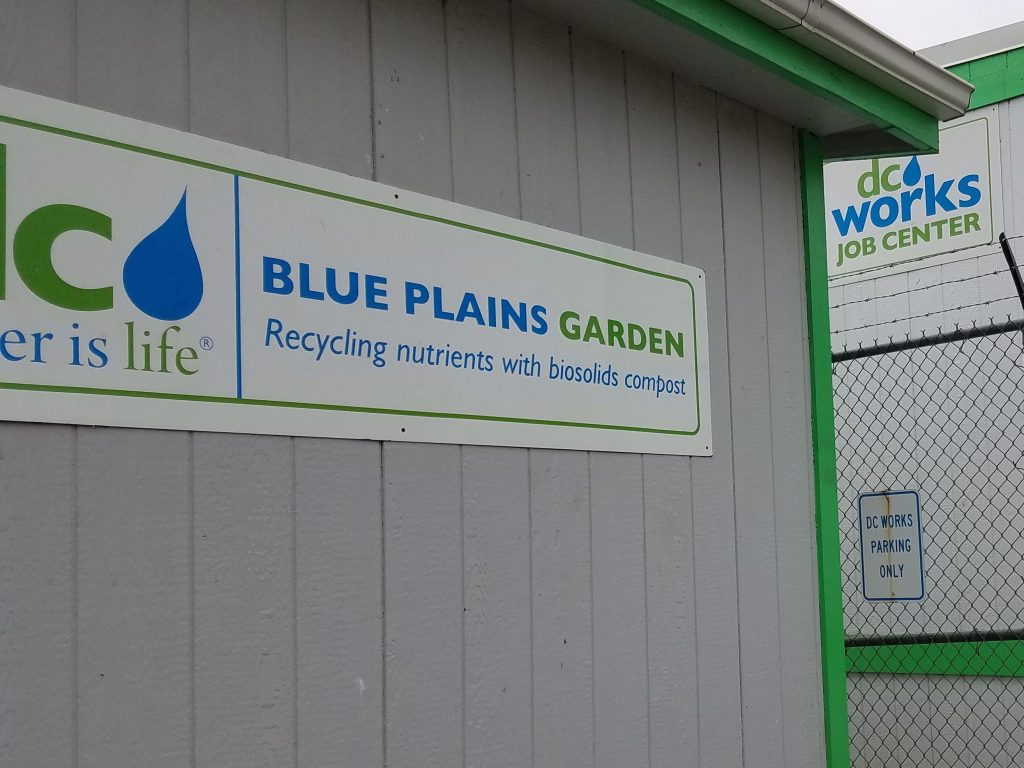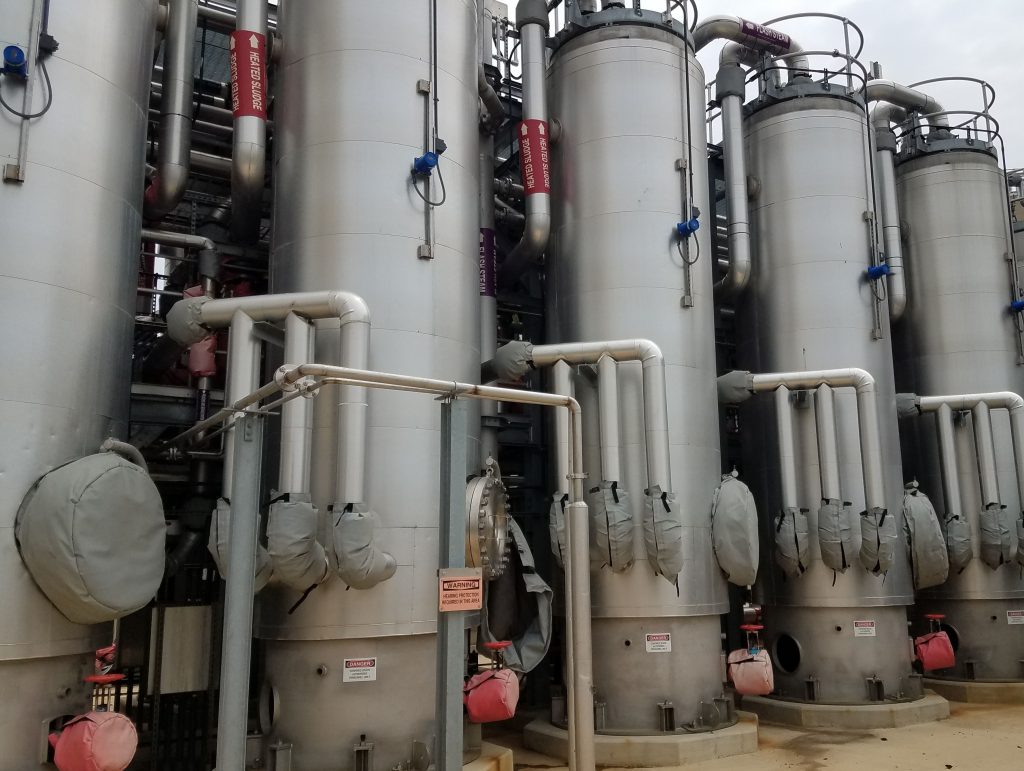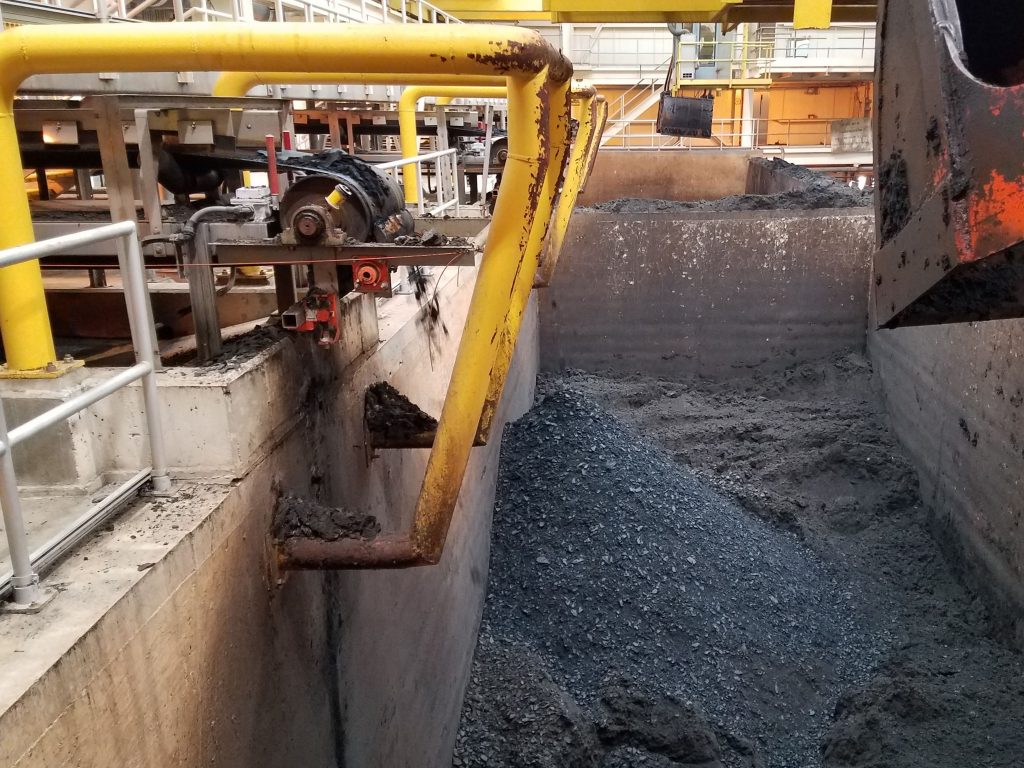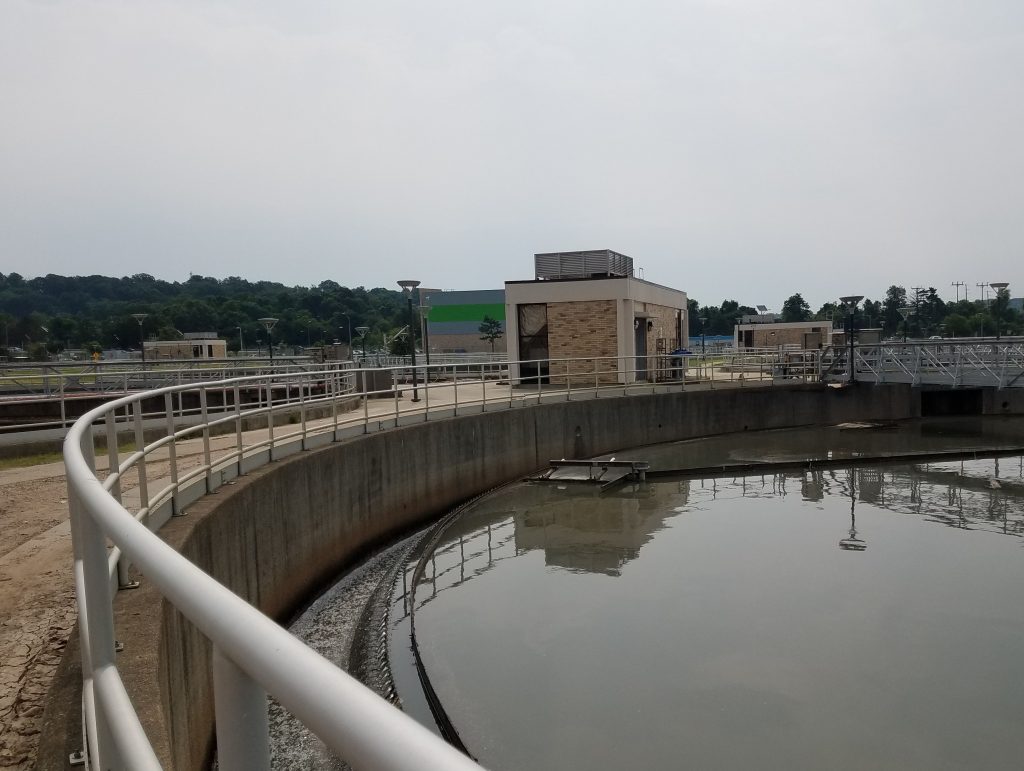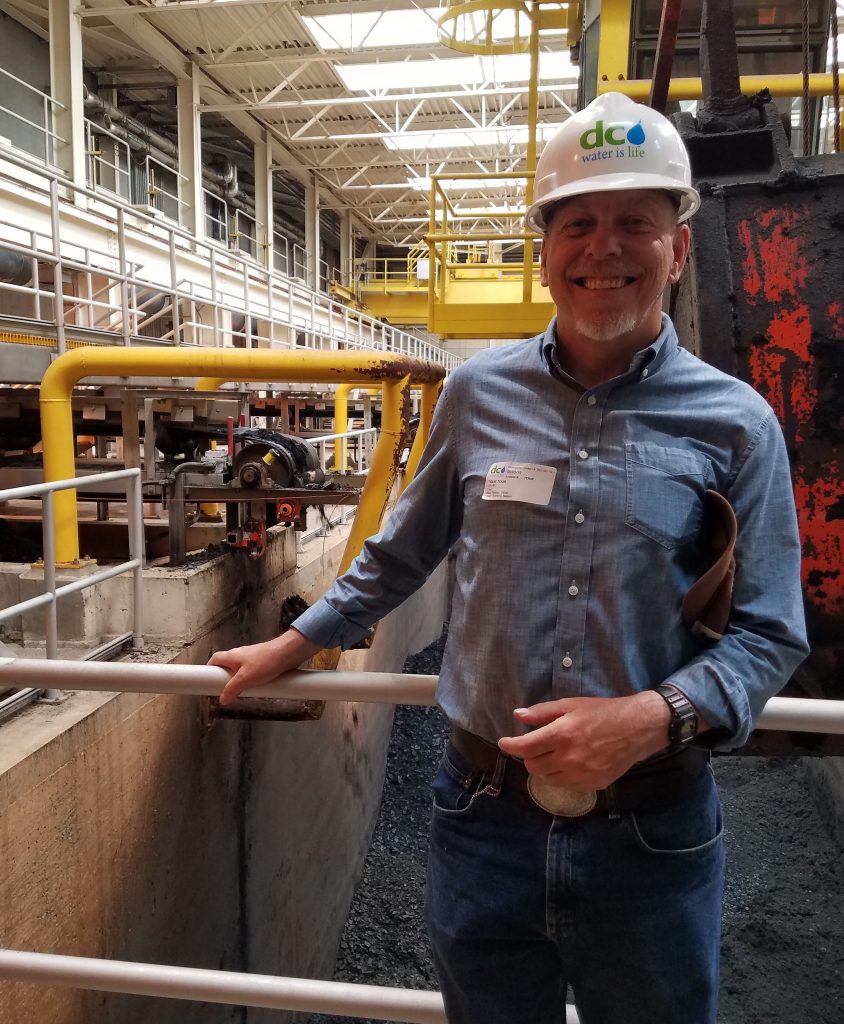
The Blue Plains Water Treatment Plant is one of the most advanced in the world. I am interested in biosolids and in water quality, so I went on a tour when I had the chance. In many ways it was reminiscent of the Milwaukee sewage plant that we (my cousins and I) visited last year. When I mentioned the Milwaukee facility to some of the professionals at Blue Plains, they evinced the proper respect. Milwaukee did not invent biosolids, but Milorganite was among the first and still remains one of the most successful use
I was lucky enough (well I kinda made it happen) to sit next to the woman from Blue Drop, the non-profit firm in charge of marketing biosolids form the plant. We talked about how good and useful biosolid are for building soil. Building soil. Biosolids add heft. We can sequester prodigious amounts of carbon in soil if we build soil. I told her that the only problem with biosolids in forestry is that we (at least I) am unable to get them as much as I want. I doubt she will be able to help me with my specific problem, since Brunswick County is too far away, but it is always good to talk with anybody interested.
The plant is underfunded, typical of much public infrastructure, so always looking for ways to cut costs of make money. They use methane from the biodigesters, take advantage of waste heat and they are planning to put solar panels over some of the roofs and tanks.
Selling biosolids
They also think that they can make some money selling biosolids. There are cultural impediments to the sale. People are just grossed out by the thought of recycled poop. But attitudes are changing. They upgraded their ability to process biosolids and now produce class A biosolids. You can see them in my pictures. They don’t look like crap and don’t smell very much, so they are more accepted.
They also gave up using lime stabilized biosolids and instead run them through thermal hydrolysis, a two-stage process combining high-pressure boiling of sludge followed by a rapid decompression. This combined action sterilizes the sludge and makes it more biodegradable and destroys pathogens in the resulting in it exceeding the stringent requirements for land application, i.e. great biosolid.
Thermal hydrolysis
You can see the thermal hydrolysis machine in my picture. It is the first of its kind in the USA. In the USA. This points to an American blind spot. This technology is well established in Europe and it is much better than previous treatments. But we Americans refuse to learn from their experience. It is a similar dynamic for CLT. Procurements often specify that successful projects must be in America. We miss a lot of good idea with our parochial outlook. Americans are leaders in many things, but not all things and good ideas do not stop at the border.
Learn from others
In the early days of our republic, one of the most important duties of American diplomats was to bring back good ideas from other places. We still do this, but we have too much of a “not made here” idea. The Europeans are ahead of us in many aspects of waste treatment and ecological products. We need not reinvent. We can take the best and leave the rest and then move on. Makes sense to me.
Innovation is most often lateral thinking – the adjacent possible. We get that from using the work of others & sharing our own.

